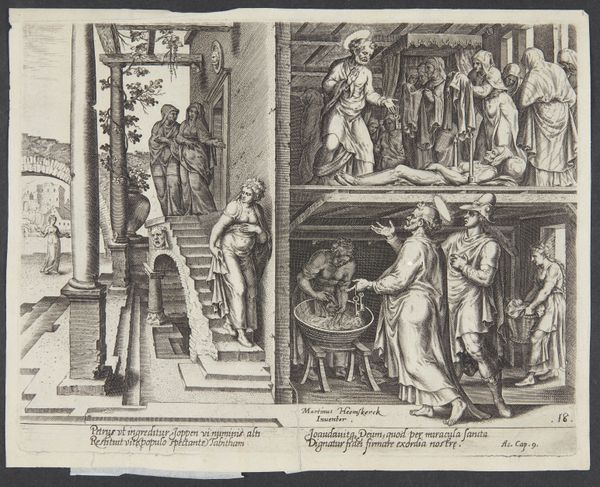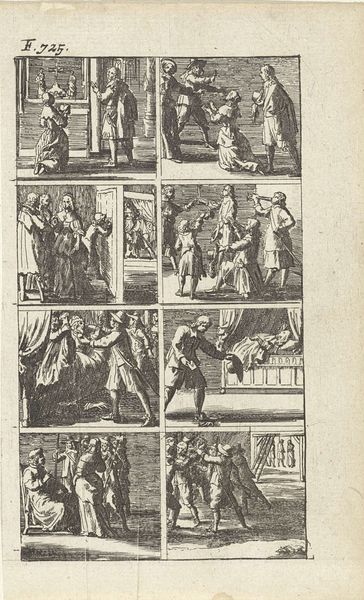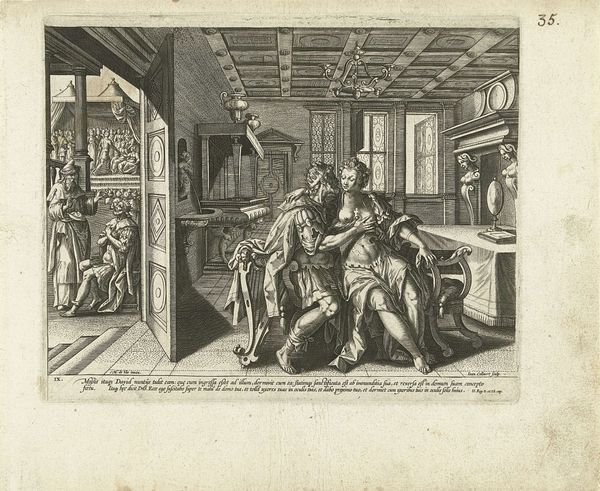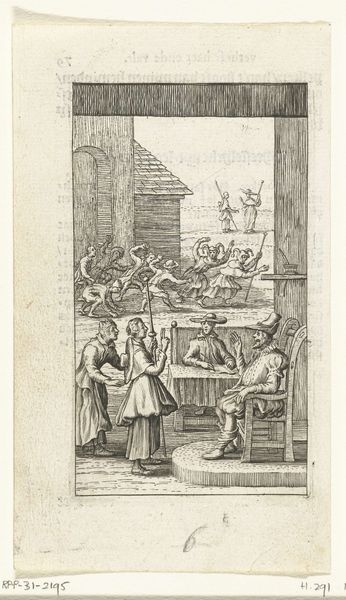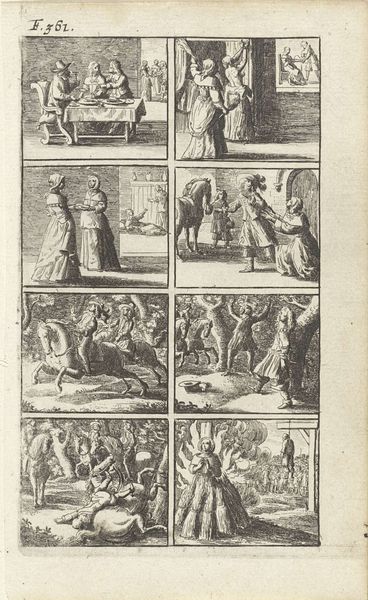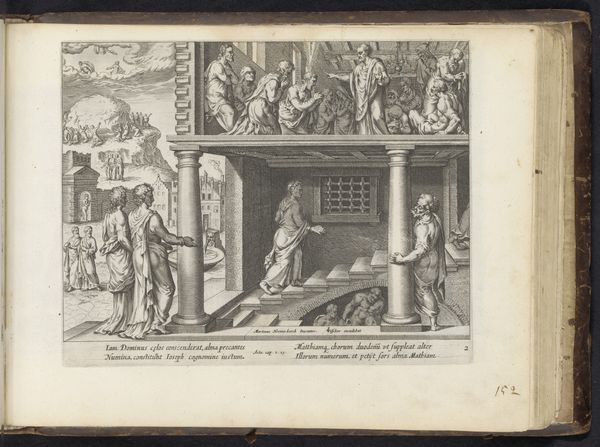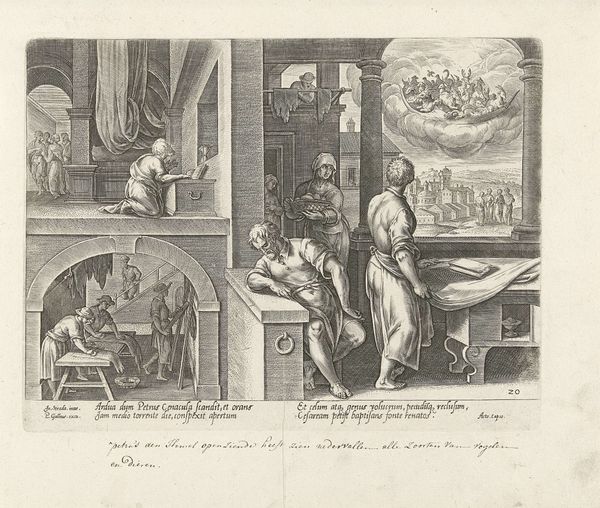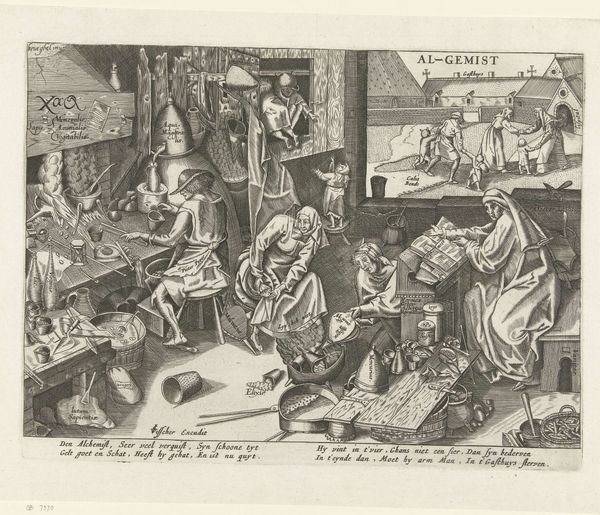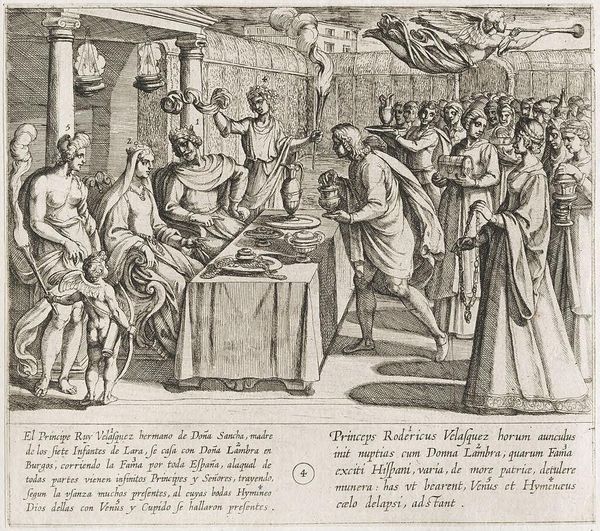
print, engraving
#
narrative-art
#
baroque
# print
#
old engraving style
#
figuration
#
line
#
history-painting
#
engraving
Dimensions: height 212 mm, width 274 mm
Copyright: Rijks Museum: Open Domain
Editor: Here we have "Opwekking van Dorkas (Tabita)," or "The Raising of Tabitha," an engraving by Claes Jansz. Visscher, dating from between 1643 and 1646. It’s currently at the Rijksmuseum. The composition feels quite unusual with those stacked scenes, almost like a comic strip layout. What's your take on it? Curator: It’s a fascinating piece. Let’s consider the historical and social context. Visscher produced this engraving during a time of intense religious and social upheaval. The division of the scene invites us to analyze how power operates within social strata. The resurrection of Tabitha is not just a miracle, it's a highly gendered representation of power and compassion. How does this work, depicting a woman restored to life through male intervention, reflect or challenge the patriarchal structures of the 17th century? Editor: I see what you mean. It does seem like Tabitha is passive in this moment of supposed triumph. What do you make of the architecture on the left side? Curator: The architecture adds another layer. It represents the structured societal order that often confined women. Notice how the women are situated near the stairs? Who holds the power within that structure, and how does the image reinforce those hierarchies? Editor: So, the seemingly straightforward depiction of a biblical miracle is actually loaded with commentary on gender and power dynamics of the time? Curator: Precisely. Visscher's engraving encourages us to question not only the depicted event but the broader socio-political framework within which it was created and consumed. It highlights the need for feminist perspectives within the interpretation of art history. Editor: This really shifts how I view the piece. I was initially focused on the visual style, but I'm now thinking more deeply about the message it conveys about women. Curator: Exactly, engaging with art like this empowers us to uncover the intersectional narratives embedded within it. Always consider who benefits from the stories that art tells.
Comments
No comments
Be the first to comment and join the conversation on the ultimate creative platform.
